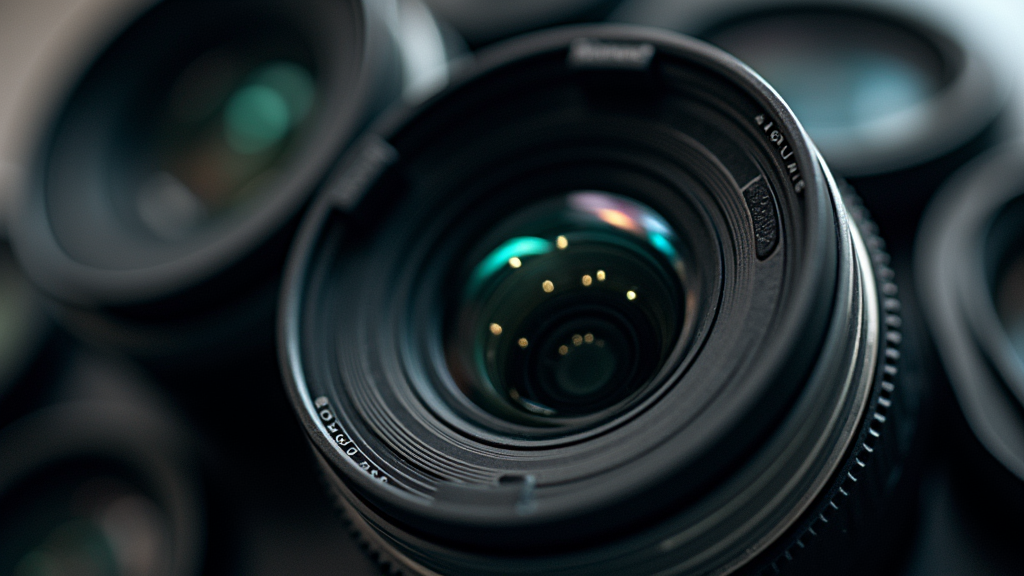Autofocus technology has completely reshaped the way photographers capture life’s moments, turning once frustrating focus challenges into creative opportunities. Over decades, autofocus systems have advanced from simple manual adjustments to sophisticated, computer-assisted devices that let photographers shoot dynamic scenes almost instantly. In this guide, I explain how autofocus systems have moved through various next stages and how modern technologies benefit photographers today. The adventure of autofocus is filled with creative breakthroughs that have refined accuracy and speed, enabling photographers to capture sharp images in even the most demanding situations.
Understanding the Basics of Autofocus
Before jumping into the evolution of autofocus systems, it helps to grasp the fundamental principles behind them. Autofocus is a feature built into cameras that quickly finds the correct focus distance for a scene. In earlier days, photographers had to adjust focus manually, a slow process that often led to missed opportunities. Today, sensors and smart algorithms use real-time data to automatically adjust lens elements. This switch from manual focusing has not only saved time but has also opened up new creative possibilities in photography.
Key Components of Autofocus Systems
- Focus Sensors: They detect contrast differences in a scene to judge which parts are sharp.
- Lens Actuators: Small motors that move lens elements to achieve proper focus.
- Control Algorithms: Software that interprets sensor information and decides the optimal adjustments.
- Feedback Loops: Systems that continuously make small changes as subjects move.
Understanding these components helps in appreciating how breakthroughs in technology directly impact your photography. Improved sensor accuracy and fast processing have transformed autofocus from a simple add-on into a critical tool for capturing fleeting moments, whether you are shooting a fast-paced event or a carefully composed portrait.

The Early Days of Autofocus Technology
The first experiments with autofocus date back to the 1970s and 1980s. At that time, engineers were just beginning to solve the technical hurdles that come with rapidly achieving sharp focus. Early systems were bulky and often ineffective, especially when it came to shooting in low light or capturing fast-moving subjects. These initial attempts, although limited in performance, laid the groundwork for future breakthroughs.
Historical Challenges and Breakthroughs
- Slow Response: Early autofocus systems suffered from noticeable delays between activation and focus lock.
- Limited Accuracy: They often provided only rough focusing, resulting in soft or imprecise images.
- Environmental Constraints: Dependence on good ambient light meant performance varied widely.
- Mechanical Complexity: Bulky designs made integration into compact cameras a significant challenge.
Despite these challenges, pioneering engineers managed to tackle many issues, and the development of phase-detection autofocus marked a major turning point. This innovation paved the way for more precise techniques that continue to shape modern autofocus technology.
Advancements in Autofocus Features
The progress in autofocus didn’t happen overnight. Over the years, both hardware and software components underwent significant improvements. Techniques like contrast-detection and hybrid autofocus were developed, merging the strengths of different methods to offer better performance overall.
Technological Improvements
- Contrast-Detection: This method uses the fine details within an image to gauge focus accuracy, performing best in well-lit conditions.
- Phase-Detection: By splitting incoming light into distinct images, this technique measures depth differences, leading to much faster focus acquisition.
- Hybrid Systems: A blend of contrast and phase detection, these systems are designed to provide a balanced performance in speed and precision.
Each technical improvement has helped reduce missed shots and improved detail in images. Faster focusing minimizes the chance of blurred movement, while enhanced accuracy ensures that even minute details are captured clearly. Photographers soon realized that these advancements not only made shooting easier but also elevated the overall quality of their images.
Modern Autofocus Capabilities and Challenges
Today’s modern autofocus systems are both powerful and versatile, yet they still have certain limitations. Contemporary cameras are fitted with numerous autofocus points and advanced tracking systems that can lock onto moving subjects with impressive precision. However, even these systems can struggle with unpredictable lighting or subjects that change direction rapidly.
Current Features and Considerations
- Eye and Face Detection: This technology helps ensure that the most important parts of the scene, like a subject’s eyes, remain sharply in focus.
- Tracking Focus: Constantly adjusts focus even as subjects move across the frame.
- Low-Light Performance: Recent innovations have improved focusing in dim environments, though challenges can still arise under very poor lighting.
- Customization Options: Many cameras now allow users to adjust how sensitive and fast the autofocus responds, making it easier to tailor the system to your shooting style.
Even with these high-tech tools, understanding when and where autofocus might falter is essential. This awareness allows photographers to plan their shots better and sometimes opt for manual focus when conditions become too unpredictable
Autofocus Settings for Different Photography Styles
Different photography styles demand different autofocus settings. Whether you are shooting portraits, landscapes, sports, or even macro images, the choice of autofocus mode plays a crucial role in the final outcome. Knowing which mode to use in a given situation can significantly affect your results.
Tuning Autofocus for Your Needs
- Portrait Photography: Many cameras now include features like face and eye detection, which are really important for keeping a subject’s eyes in sharp focus.
- Sports and Action: Fast-moving subjects require high-speed phase-detection paired with continuous autofocus. This approach minimizes lag and helps capture rapid sequences with clarity.
- Landscapes and Macro: Slower, more precise focus modes often offer greater control for static subjects and intricate details.
- Low-Light Photography: Some cameras are equipped with specialized autofocus modes that boost sensitivity when shooting in dark conditions.
Selecting the most appropriate autofocus mode is crucial in capturing the essence of your scene. Experimentation and understanding your equipment’s strengths can really make a difference, ensuring every shot is as sharp and detailed as possible.

Optimizing Autofocus Through System Upgrades
Maintaining peak autofocus performance is not just about having state-of-the-art gear; it also involves regular upkeep and smart use of your camera’s features. Modern cameras often allow firmware updates and various setting adjustments that can give your autofocus system a much-needed boost over time.
Tips to Improve Autofocus Performance
- Lens Calibration: Regular calibration is very important to keep the autofocus system accurate, especially when using a combination of manual and automatic modes.
- Firmware Updates: Do check in for updates from your camera manufacturer. These updates frequently smooth the way for improved autofocus performance based on the latest research and user feedback.
- Cleaning: Keeping lenses and sensors free from dust and smudges goes a long way toward maintaining fast and precise focusing.
- Custom Settings: Spend some time exploring your camera’s customizations. Adjusting individual autofocus points or sensitivity settings can truly transform your shooting experience.
Small adjustments can lead to big improvements. A well-maintained system not only performs better but also delivers more consistent results, especially when shooting in challenging scenarios where speed and precision matter most.

Staying Current with Autofocus Technology
Autofocus technology continues to grow with the integration of artificial intelligence and computational photography. Manufacturers are now introducing smart systems that pick up on shooting conditions and instantly adjust settings for better results.
Future Trends
- AI Integration: Increasing numbers of cameras are tapping into AI to predict subject movement, enabling the focus system to adjust even before the subject shifts position.
- Computational Photography: New techniques are being developed that blend multiple focusing methods to produce images featuring a wider depth of field while keeping key areas sharp.
- Mirrorless Innovations: Mirrorless cameras are at the forefront with designs that support more autofocus points and faster processing speeds, offering a glimpse into the future of imaging.
- Real-Time Processing: Advances in processor technology allow for nearly instantaneous adjustments, making delays almost a thing of the past.
Keeping up with these trends is essential for anyone serious about photography. Whether you are considering an upgrade or simply want to know what the future holds, staying informed helps you harness the latest technology to your benefit.
Common Questions & Troubleshooting
Why is my autofocus system struggling in low light?
Low-light conditions challenge even the best autofocus systems. In dim environments, sensors have less contrast to work with, which can lower focus accuracy. Although many cameras include special low-light modes, sometimes you might need to switch to manual focus or add extra lighting to get the best results.
How do I know when to update my autofocus settings?
- Regularly review your images. If you notice blurred or inconsistent focus, it might be time to adjust your settings.
- Keep an eye out for firmware updates from your camera’s manufacturer. These updates often come with improvements that can make your autofocus system more reliable.
- Try different autofocus modes during varying shooting conditions to see what delivers the best performance.
What should I do if autofocus consistently misses my subject?
If your autofocus routinely misses key details, consider recalibrating your lens and cleaning your equipment. Sometimes, switching to manual focus for certain challenging situations can also produce better outcomes.

Bottom Line & Next Steps
Autofocus technology has dramatically transformed photography, shifting from rudimentary manual adjustments to advanced, automated systems that keep up with today’s fast-paced environments. By understanding how these systems have progressed through various next stages and familiarizing yourself with their strengths and limitations, you can make smarter decisions when upgrading your equipment or fine-tuning your settings. Every improvement in autofocus not only improves the clarity of your images but also enhances your overall creative experience.
Your Action Plan
- Review your current autofocus settings and experiment with different modes based on your shooting style.
- Keep your gear in top shape by regularly updating the firmware, calibrating your lens, and cleaning your equipment.
- Stay informed by checking up on the latest advancements in autofocus technology, and don’t hesitate to test out new features when possible.
It isn’t just about snapping a photo; it’s about capturing an experience. Every decision, from camera settings to maintenance routines, plays a role in the final image you produce. Take the time to explore the capabilities of your camera, and share your experiences with others. By doing so, you not only refine your technical skills but also contribute to a growing community that values innovation and creativity in photography.

What new autofocus feature are you most excited about? Reflect on your current setup and think about ways to take your photography up a notch. The future of autofocus is bright, and each improvement offers you an opportunity to create images that truly tell a story.





-Good, fast article this time, $$$
-I actually have the luxury of using the cameras on my phone anytime I need to in order to get a good photo or video recording done.
-It’s amazing to see how far we’ve come with technology and whatnot; automatically-zooming frames that can reach up to 100x the range is no mere accomplishment.
-And that’s just with the phone cameras; I can’t imagine what today’s professional cameras are actually capable of.
-Best,
ALEJANDRO G.
Thanks, glad you liked the article! And yeah, professional cameras these days are on another level. Some of the latest models have insane resolution and low-light capabilities. Makes me excited to see what’s next!